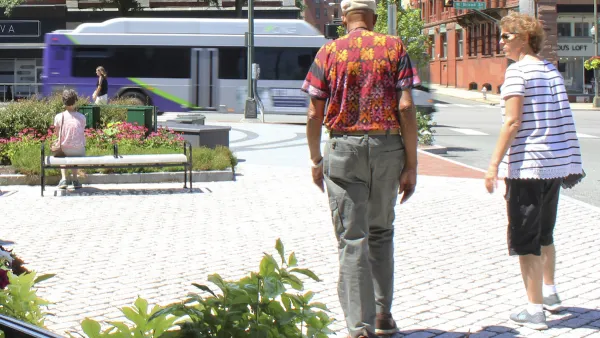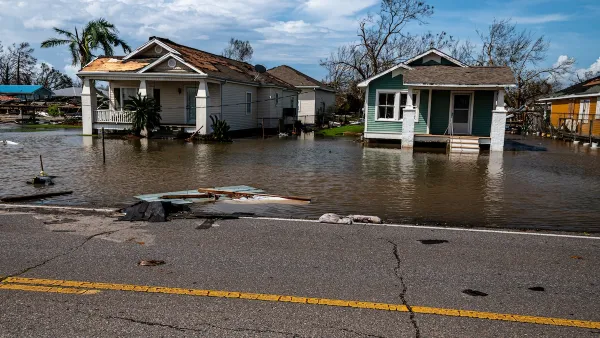The internet firm has launched new features making it easier for users to learn about transit options when getting directions.
"Google Transit was already the best thing that ever happened to online public transit trip planning, and now it's grown to a whole new level. Even better, it's starting to be incorporated into the default Google Maps and Google Earth. The new features and the integration into normal map queries will make public transit more accessible and easier for everyone to understand; and in doing so, it will certainly increase transit ridership and reduce driving.
One of the big barriers to public transit use is the knowledge required to use the system: where to wait, when to wait, where to transfer, how much to pay, etc. Some readers may remember that two years ago we helped cause Google Transit to happen, but it's taken off far beyond what we had suggested, and they keep getting better. What's more, they're doing it at no charge to the transit agencies (a perpetually under-funded sector of local governments). More cities are coming on board, as well; if you live in one of the eleven cities now participating, enjoy! If you live elsewhere, consider writing to your local transit agency and telling them to join the 21st century."
FULL STORY: Google Transit 2.0

Planetizen Federal Action Tracker
A weekly monitor of how Trump’s orders and actions are impacting planners and planning in America.

Vehicle-related Deaths Drop 29% in Richmond, VA
The seventh year of the city's Vision Zero strategy also cut the number of people killed in alcohol-related crashes by half.

As Trump Phases Out FEMA, Is It Time to Flee the Floodplains?
With less federal funding available for disaster relief efforts, the need to relocate at-risk communities is more urgent than ever.

Texas Safety Advocates Raise Alarm in Advance of Tesla Robotaxi Launch
The company plans to deploy self-driving taxis in Austin with no oversight from state or local transportation agencies.

How to Fund SF’s Muni Without Cutting Service
Three solutions for bridging the San Francisco transit agency’s budget gap without reducing service for transit-dependent riders.

Austin Tests Self-Driving Bus
Autonomous buses could improve bus yard operations for electric fleets, according to CapMetro.
Urban Design for Planners 1: Software Tools
This six-course series explores essential urban design concepts using open source software and equips planners with the tools they need to participate fully in the urban design process.
Planning for Universal Design
Learn the tools for implementing Universal Design in planning regulations.
Borough of Carlisle
Smith Gee Studio
City of Camden Redevelopment Agency
City of Astoria
Transportation Research & Education Center (TREC) at Portland State University
City of Camden Redevelopment Agency
Municipality of Princeton (NJ)


























